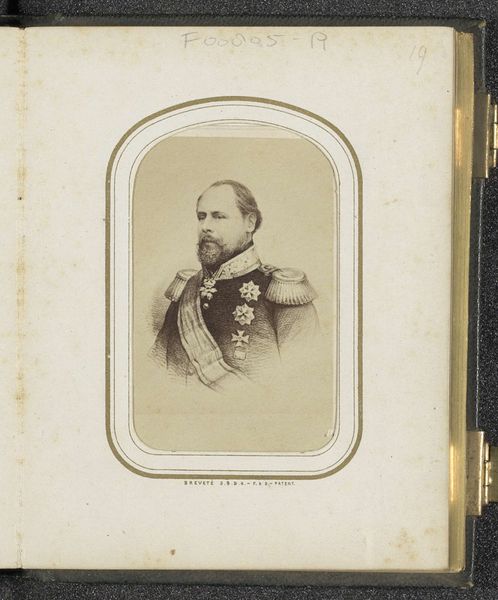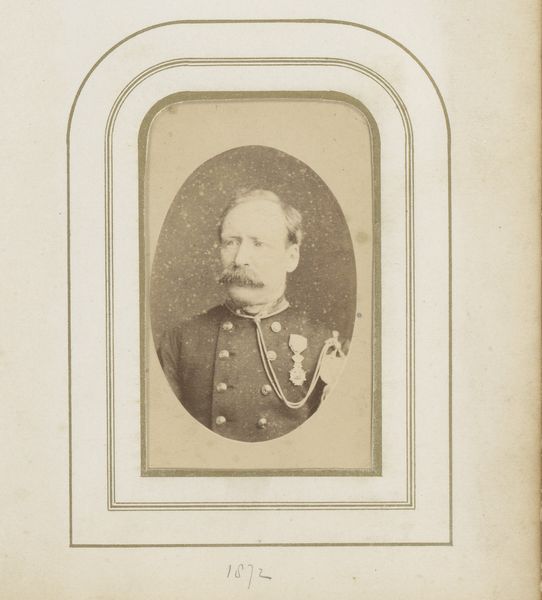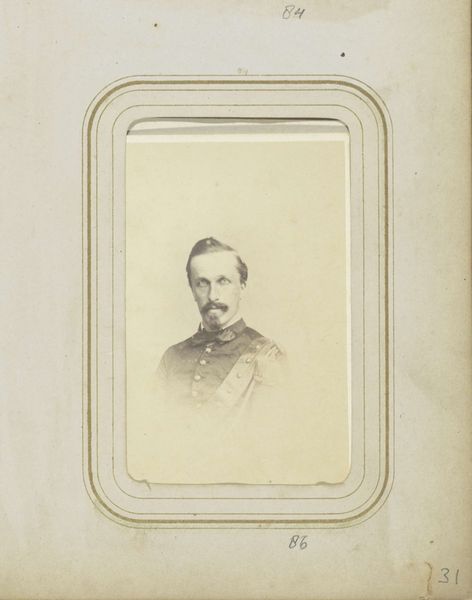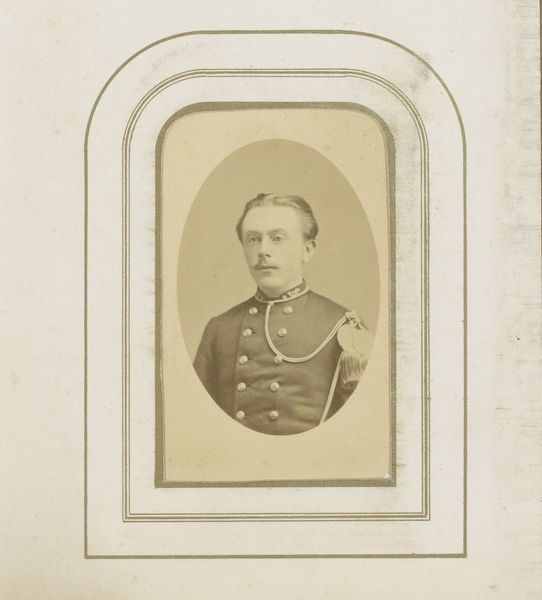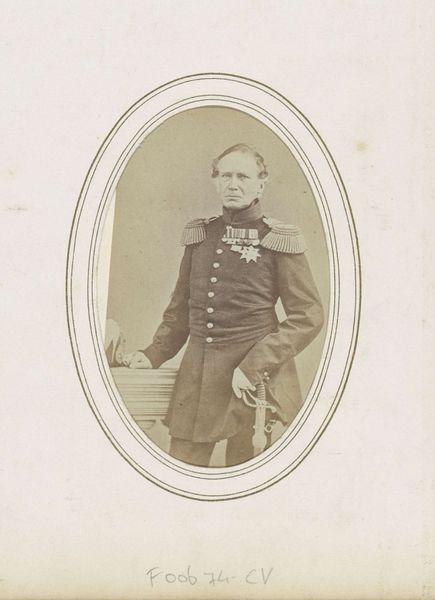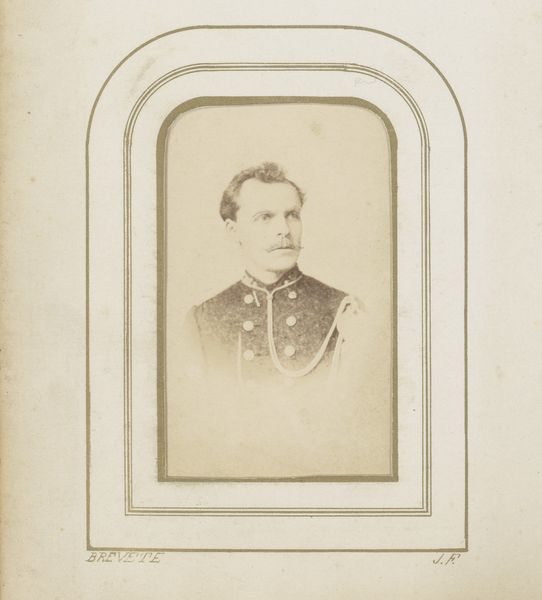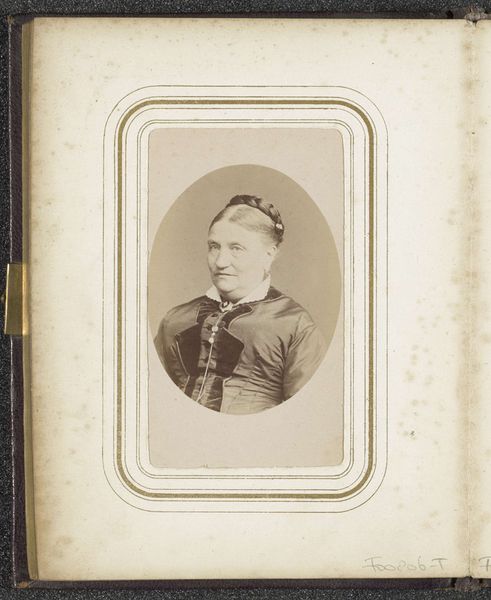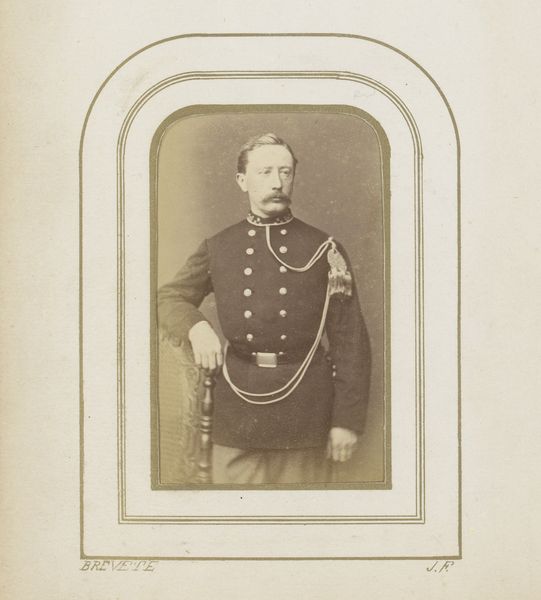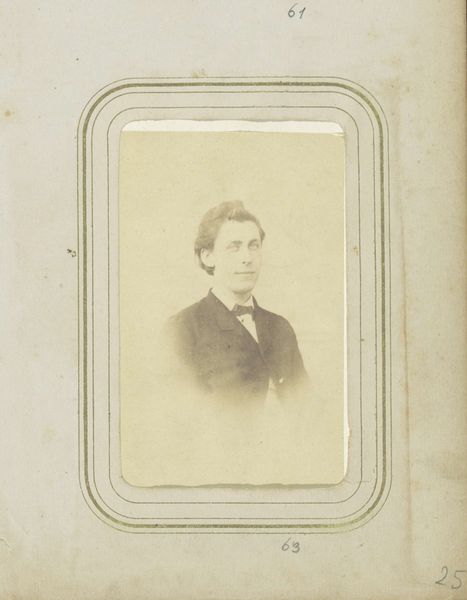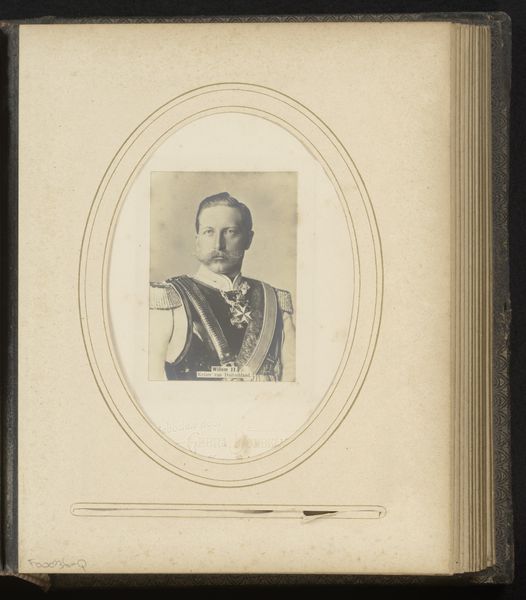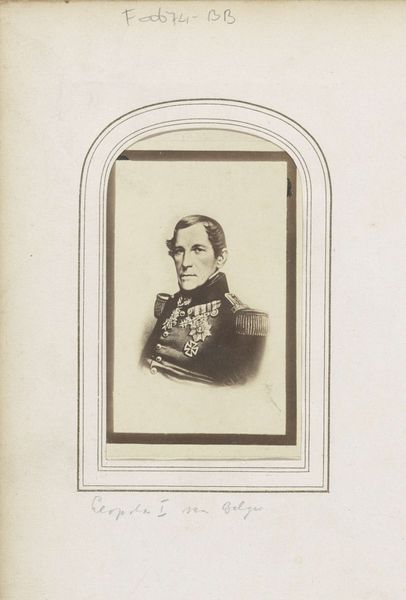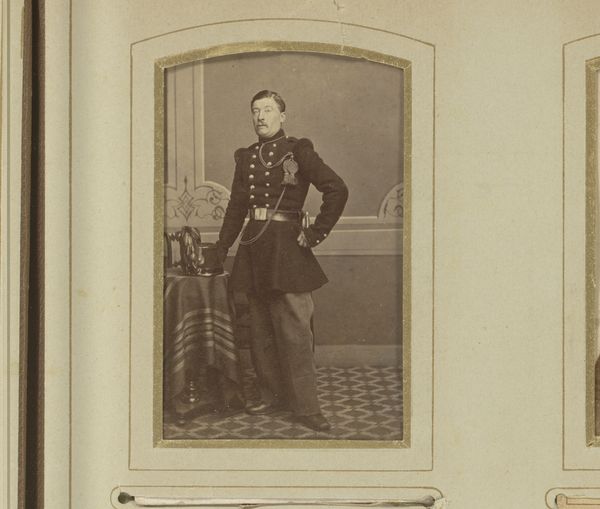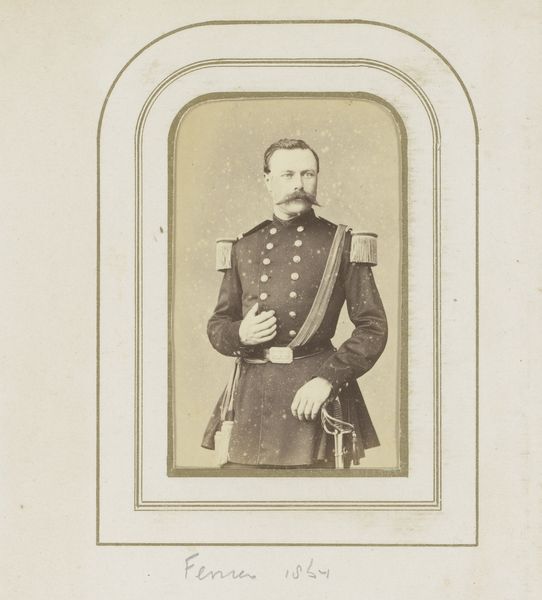
Fotoreproductie van (vermoedelijk) een prent van prins Alexander I, zoon van Willem II 1863 - 1869
0:00
0:00
photography, albumen-print
#
portrait
#
photography
#
academic-art
#
albumen-print
#
realism
Dimensions: height 96 mm, width 61 mm, height 96 mm, width 61 mm
Copyright: Rijks Museum: Open Domain
Curator: This albumen print, likely a photographic reproduction of a print, captures Prince Alexander I, son of Willem II, sometime between 1863 and 1869. It’s an interesting piece reflecting royal portraiture of the time. Editor: My first impression is how incredibly staged and stiff it feels. It's technically proficient, but lacks any sense of personality. He looks imprisoned in formality. Curator: Right. Let’s think about the process. This is photography in its relative infancy. Albumen prints required coating paper with egg whites before developing, a labor-intensive process influencing the aesthetics. This print reproduces another, probably a painting or engraving. What’s the purpose of further reproduction? Editor: It raises fascinating questions about accessibility and dissemination of power, doesn't it? A photographic reproduction makes the image of royalty more readily available. Consider the power dynamics implicit in its creation. He isn’t being presented as approachable, but as aloof, in order to signal superior rank. The albumen’s materiality is key; consider the availability and cost of materials and time. Curator: Precisely! The uniform, the awards—they’re deliberately presented. But beyond its overt symbolism, this photoprint functioned in 19th century print and portrait markets, circulated via publications and portrait studios. The consumer becomes a part of the process. How is such a market sustained? Editor: Exactly. Think about the market sustained and whose power is being further legitimized by consumption of art objects like these images. Consider those outside that power, unable to access representation in the same manner. It highlights social stratification in the 19th Century but extends still further; it challenges what we find meaningful about this type of artwork. Curator: An important connection! By exploring materiality and mass-reproducibility, it's clear that seemingly traditional portraiture provides significant insight into broader systems. Editor: Yes, understanding this context expands our perspective of this photograph from mere historical document to a cultural artifact.
Comments
No comments
Be the first to comment and join the conversation on the ultimate creative platform.
